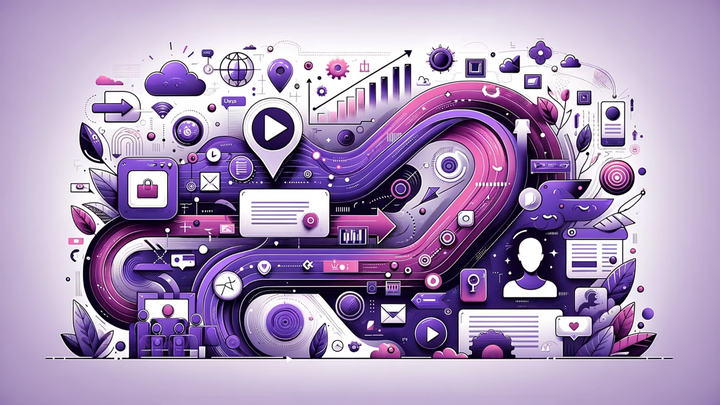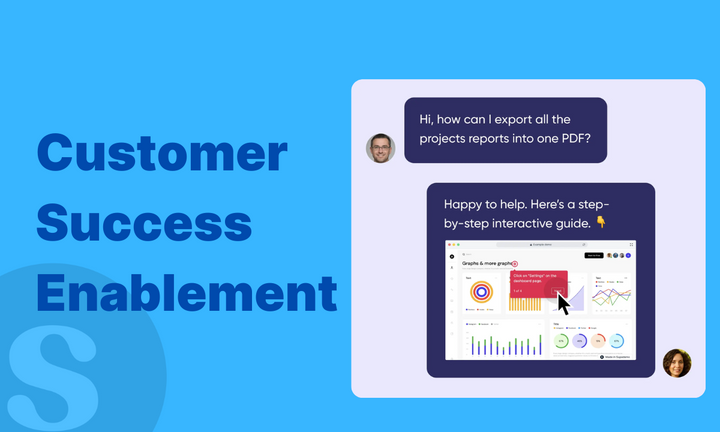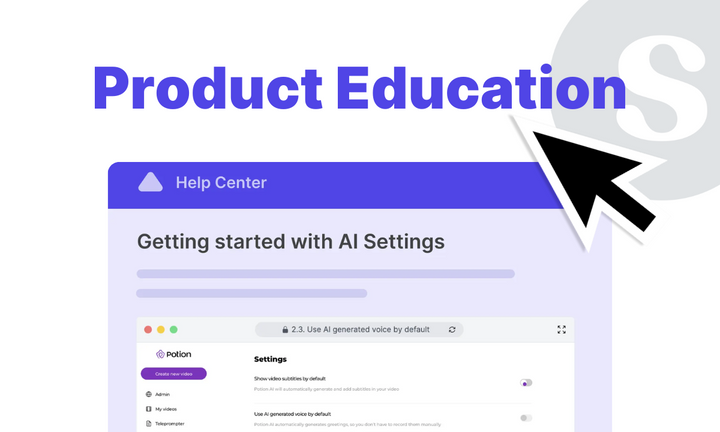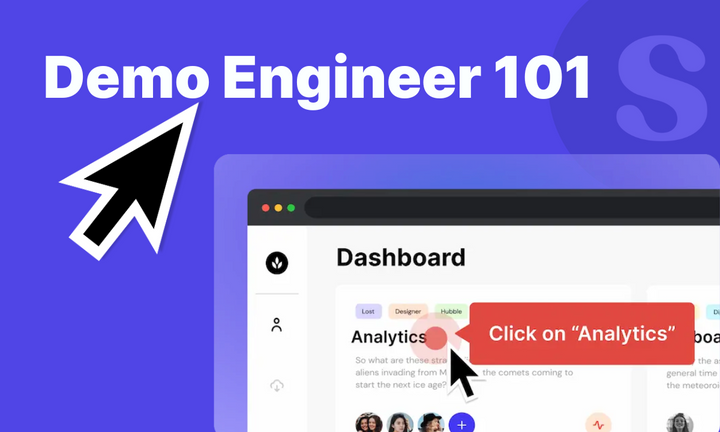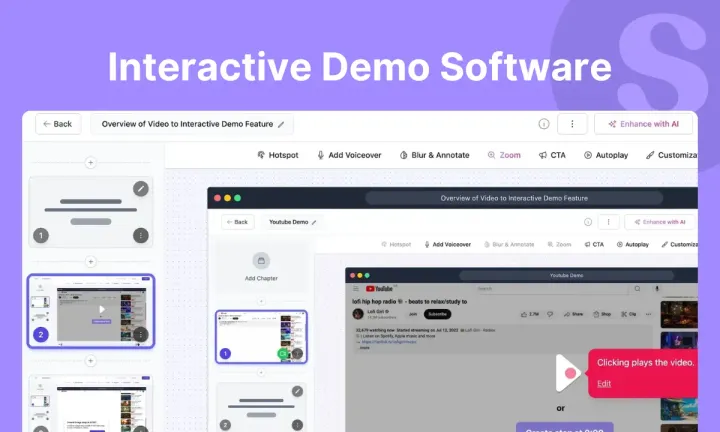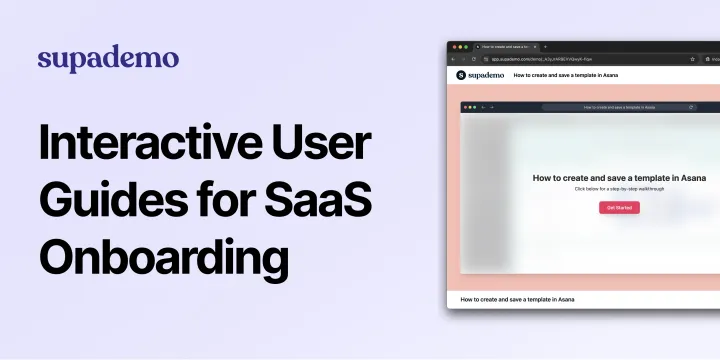When it comes to digital products, first impressions are crucial. However, many apps and software struggle with high churn rates and low engagement. This is often due to unclear value propositions, confusing functionality, stale content, or bugs. To address these issues and ensure user success, it is essential to design an effective onboarding flow.
In this comprehensive guide, we will explore the concept of onboarding flows and provide practical tips and examples to help you create a successful onboarding experience. We will cover the definition of onboarding flows, the different types of flows, the user onboarding flow journey, the key elements of a great onboarding flow, and nine excellent onboarding examples from the SaaS industry. By the end of this article, you will have the knowledge and tools to create an onboarding flow that engages and retains users.
1. Understanding Onboarding Flows
Onboarding flows are a series of steps or screens that introduce new users or current customers to a product's user interface or new features. These flows vary depending on the user's platform, such as mobile or desktop. The goal of an onboarding flow is to convey the right message at the right time and guide users through the product or feature.
There are different types of onboarding flows, each with its own goals:
- "Aha!" Moment-Focused: These flows aim to fight churn by helping users realize the benefits of the product or feature, ensuring they understand why they are here and keeping them engaged until they reach their "aha!" moment.
- Feature-Focused: Onboarding flows for current users focus on introducing new features or upgrades, educating them on how to use these additions effectively.
- Success-Focused: This type of flow is tool-specific, guiding users on how to navigate the product interface and get the most out of the tool.
- Account-Focused: Some products require users to create an account for success. Account-focused flows focus on guiding users through the account creation process, ensuring it is seamless and efficient.
However, the best onboarding experiences often combine elements from all these types, tailored to the specific needs of the users.
2. The User Onboarding Flow Journey
User onboarding flows encompass more than just the initial sign-up process. They extend throughout the user's lifecycle and include the following phases:
- User Sign-Up: This is the first interaction users have with your product, whether it's signing up for a free trial or a paid plan. The sign-up process sets the tone for their entire experience and can highlight product benefits to encourage completion.
- User Log-In: When users log in for the first time, it's crucial to guide them through the product interface with onboarding screens or modals. These screens should provide a warm welcome and help users become familiar with the platform.
- User Lifecycle: Onboarding is an ongoing process that continues throughout the user's journey. Even after the initial onboarding tour, you need to continually onboard users to new features and updates to ensure their success and retention.
By considering the entire user onboarding flow journey, you can design a comprehensive onboarding experience that engages users at every stage.
3. Key Elements of a Great User Onboarding Flow
To create a successful onboarding flow, it's important to focus on the following key elements:
Use Video, Images, and GIFs
Visual content is highly effective in conveying information and engaging users. Studies show that people remember more information when learning through a combination of images and text. Incorporate videos, images, and GIFs into your onboarding screens to make them visually appealing and memorable.
Implement Product Tours
Product tours are a valuable tool for guiding users through the onboarding process. These tours can combine banners, modals, hotspots, and more to provide step-by-step education about the product's features and functionalities. However, be mindful of the number of steps in your tour to avoid overwhelming users.
Maintain Consistent Branding
Consistent branding is essential for building trust and recognition. Ensure your onboarding flows align with your brand's voice, visuals, and design. Assign a dedicated team or role to oversee the creation of onboarding screens to maintain consistency throughout the user journey.
Keep Messaging Clear
Clear and concise messaging is crucial in onboarding flows. Avoid jargon and assume nothing. Focus on providing essential information in a straightforward manner. If necessary, supplement the text with visuals to enhance understanding.
Introduce Tooltips
Tooltips are a helpful way to provide additional information and guidance within the product interface. These small prompts can remind users of specific features or actions, ensuring they make the most of the product. Integrate tooltips strategically to support users throughout their onboarding journey.
Stay Customer-Centric
A customer-centric approach is vital in onboarding flows. Understand your users' goals and tailor the onboarding experience to address their specific needs. Highlight the benefits that your product brings to their processes, routines, and lives, and differentiate yourself from competitors.
Let Users Learn by Doing
Encourage active learning by letting users explore and interact with the product. Instead of overwhelming them with information, allow them to learn by doing. This approach builds confidence and empowers users to navigate the product independently.
Consider the Entire Flow
Maintain a holistic view of the onboarding flow, considering the information users have already seen. Avoid repetition and ensure a smooth progression of information throughout the onboarding journey. If storytelling is part of your onboarding experience, maintain a consistent theme or narrative.
Communicate through All Channels
Omnichannel communication is crucial in onboarding flows. Identify the channels your users prefer and optimize your onboarding experience accordingly. This can include email, in-app messages, push notifications, or even personalized customer support.
By incorporating these key elements into your onboarding flow, you can create a compelling and engaging experience for your users.
4. Examples of Excellent Onboarding Flows
To further inspire your onboarding flow design, let's explore nine excellent examples from SaaS companies:
Airtable: Airtable focuses on delivering personalized onboarding experiences that lead users to their "aha!" moment. By collecting user information during sign-up, they can customize the product to match user goals, providing immediate value.
LinkTree: LinkTree understands its audience and delivers an onboarding flow that matches their social-savvy users. Their onboarding screens are visually appealing and engaging, capturing attention and encouraging users to dive into the platform.
Zendesk: Zendesk effectively manages user expectations with a progress bar that highlights the remaining onboarding steps. This feature motivates users to complete the onboarding journey and sets clear milestones.
Grammarly: Grammarly introduces new features or upgrades through banners that allow users to explore, dismiss, or request reminders. This approach keeps users informed and engaged with the evolving capabilities of the product.
Joy: Joy provides a delightful onboarding experience by combining informative copy with a visual representation of mobile capability. This approach ensures users understand the benefits of using the app on their mobile devices.
Asana: Asana offers bitesize onboarding snippets throughout the user journey. These snippets provide users with relevant information and guidance based on their current knowledge of the platform, ensuring a seamless learning experience.
HubSpot: HubSpot uses tooltips strategically to provide continuous guidance to users. By scattering tooltips throughout the platform, users can access additional information and reminders without interrupting their workflow.
DataCamp: DataCamp adopts a user-centric approach by allowing users to learn by doing. Through hands-on exercises, users can apply their knowledge in a practical manner, enhancing their understanding and retention of the material.
Slack: Slack excels in onboarding with its friendly Slackbot, which offers tips and tricks throughout the user journey. This constant support and guidance ensure users maximize their productivity and become proficient Slack users.
These examples highlight the diverse approaches to onboarding flows and demonstrate the importance of personalization, clear messaging, and engaging visuals.
Conclusion
Designing an effective onboarding flow is essential for engaging and retaining users. By understanding the different types of onboarding flows, considering the entire user journey, and incorporating key elements such as visuals, product tours, and customer-centricity, you can create an onboarding experience that drives user success.
Remember to maintain consistent branding, keep messaging clear, and allow users to learn by doing. Communicate through various channels and continuously optimize your onboarding flow to meet the evolving needs of your users.
By following these guidelines and drawing inspiration from the excellent onboarding examples provided, you can create an onboarding flow that captivates users, encourages adoption, and sets the stage for long-term user satisfaction and retention.


